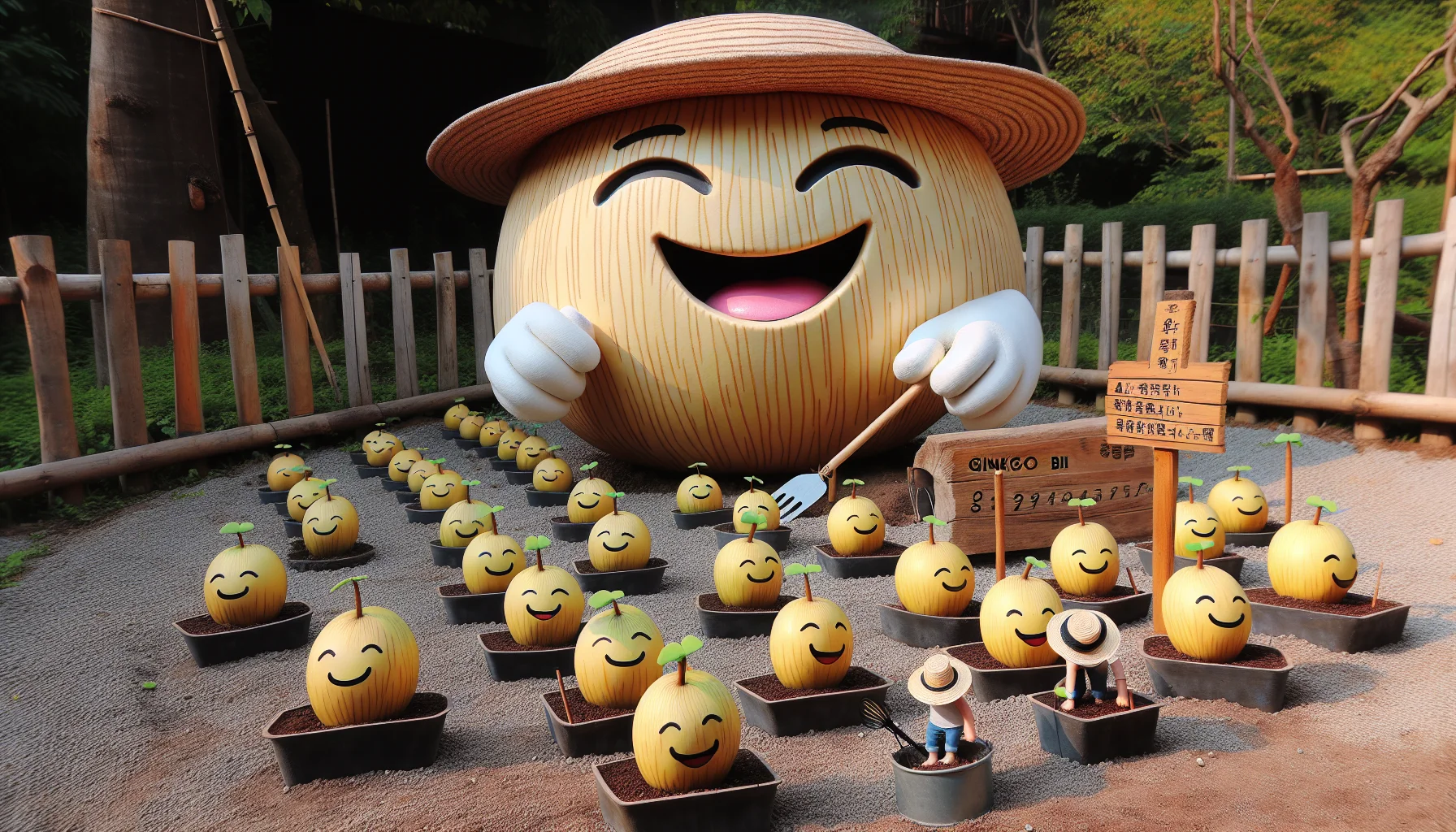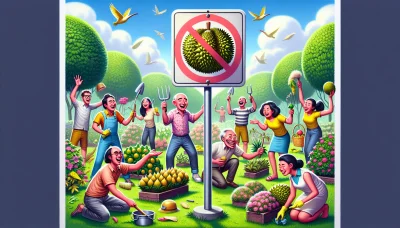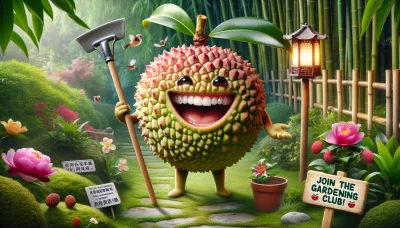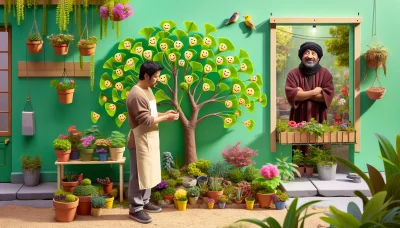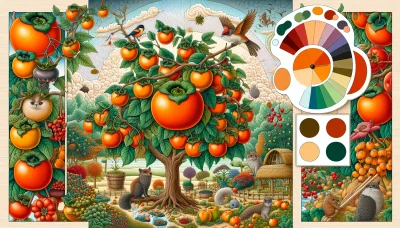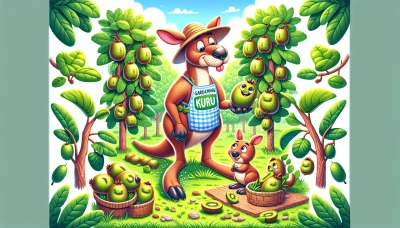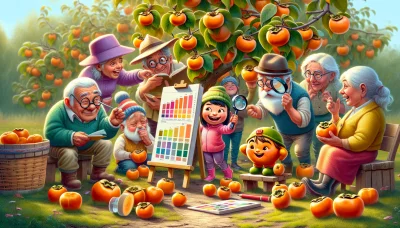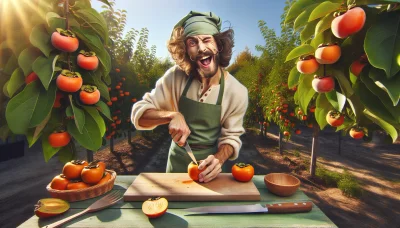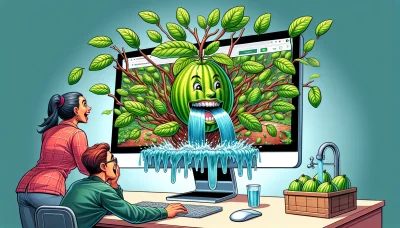Ginkgo biloba fruit Quiz
Test Your Knowledge
Question of
Introduction to Ginkgo Biloba Fruit
Ginkgo Biloba, often simply referred to as ginkgo, is one of the oldest living tree species known to man. The fruit of the Ginkgo Biloba tree, while less commonly discussed than its leaves, holds its own unique set of characteristics and uses. Originating from China, the ginkgo tree has been cultivated for thousands of years for both its beauty and its reputed medicinal properties. The fruit itself is small, with a soft inner part encased in a hard shell, and is typically yellow-brown in color when ripe. However, it's worth noting that the outer flesh of the fruit can produce a rather unpleasant smell. Despite its odor, the seeds inside the fruit are considered a delicacy in some parts of the world and are used in various culinary applications. Additionally, these seeds have been used in traditional Chinese medicine for centuries, believed to aid in respiratory and circulatory functions.
Benefits of Ginkgo Biloba Fruit
The Ginkgo Biloba fruit, often overshadowed by the popularity of Ginkgo leaves, holds its own set of remarkable benefits for health and gardening. Health-wise, the fruit contains high levels of antioxidants, which combat free radicals and support overall cellular health. This contributes to reduced inflammation and enhanced heart health, potentially lowering the risk of heart disease. Additionally, compounds found in Ginkgo fruit may aid in improving cognitive functions, including memory and focus, making it a valuable supplement for brain health. From a gardening perspective, Ginkgo Biloba trees, including their fruit, add aesthetic value to landscapes with their unique fan-shaped leaves and golden fall color. The trees are also known for their resilience, being able to withstand pollution and confined soil spaces, making them an excellent choice for urban environments. However, it's important to note that the raw fruit can have an unpleasant smell and certain parts of the fruit are not safe to consume without proper processing.
How to Grow Ginkgo Biloba Trees
- Choose the Right Location: Ginkgo Biloba trees thrive in full sun to partial shade. Select a spot that gets at least 4-6 hours of direct sunlight daily.
- Soil Preparation: These trees prefer well-drained, sandy soil. Amend your soil with compost to improve its texture and fertility if necessary.
- Planting: Plant Ginkgo Biloba in spring or fall. Dig a hole twice as wide and just as deep as the root ball. Place the tree in the hole, ensuring it's level with the surrounding soil. Backfill the hole, gently tamping down the soil to remove air pockets.
- Watering: After planting, water the tree deeply. Continue to water it regularly during its first growing season to help establish a robust root system. Once established, Ginkgo Biloba trees are quite drought-tolerant but perform best with occasional deep watering during dry spells.
- Mulching: Apply a 2-3 inch layer of organic mulch around the base of the tree to retain soil moisture, regulate soil temperature, and reduce weed competition. Keep the mulch a few inches away from the trunk to prevent rot.
- Fertilizing: Feed your Ginkgo Biloba tree in early spring with a balanced, slow-release fertilizer to support healthy growth. Avoid over-fertilizing, which can harm the tree.
- Pruning: Prune in the late winter or early spring to remove any dead, damaged, or diseased branches. Ginkgo Biloba trees have a naturally attractive shape and usually require minimal pruning.
- Pest and Disease Management: Ginkgo Biloba trees are remarkably resistant to pests and diseases. However, keep an eye out for any signs of trouble and address them promptly to keep the tree healthy.
- Patience is Key: Remember, Ginkgo Biloba trees grow slowly but are incredibly long-lived. With proper care, your Ginkgo tree will grow to be a magnificent specimen in the landscape.
Harvesting and Storing Ginkgo Biloba Fruit
Harvesting Ginkgo Biloba fruit requires timing and care to ensure the best quality. The fruits are ready for harvest in the fall when they turn a soft, yellowish color and begin to fall from the tree. It's best to wear gloves during harvest, as the flesh of the fruit can cause skin irritation in some individuals. After collecting the fruits, remove the outer flesh to reveal the nut inside. This process should be done outdoors or in a well-ventilated area due to the unpleasant odor of the fruit's flesh.
For storing Ginkgo Biloba nuts, first, they need to be thoroughly cleaned and then dried. Once dry, they can be stored in a cool, dry place for several months. If you wish to keep them longer, storing the nuts in an airtight container in the refrigerator or freezer can extend their freshness. Remember, the key to successful storage is ensuring the nuts are completely dry before storing to prevent mold growth.
Common Problems and Solutions
- Yellowing Leaves - This can be due to overwatering or poor drainage. Ensure the soil is well-draining and reduce watering frequency.
- Leaf Drop - Sudden changes in temperature or watering patterns can cause leaf drop. Try to maintain a consistent environment for your Ginkgo Biloba.
- Pest Infestations - Aphids and spider mites can be a problem. Use a gentle insecticidal soap or neem oil to treat these pests without harming the tree.
- Fungal Diseases - Ginkgo trees can be susceptible to fungal diseases like anthracnose. Ensure good air circulation and avoid overhead watering to minimize risk.
- Slow Growth - If your Ginkgo Biloba is growing slowly, it may need more nutrients. Apply a balanced, slow-release fertilizer in spring.
- Non-Fruiting - Ginkgo trees are dioecious, meaning you need both a male and female tree for fruit production. Ensure you have both if fruit is desired.
Using Ginkgo Biloba Fruit in Your Garden
Ginkgo Biloba, often celebrated for its majestic foliage and robust adaptability, also produces unique fruits that can be ingeniously incorporated into garden designs and landscaping. One creative way to use Ginkgo Biloba fruit is by creating natural, aromatic pathways. When the fruits fall and slightly decompose, they release a distinct scent, which, if strategically placed, can add an olfactory dimension to your garden experience. Additionally, the fruits can be used to create organic compost, enriching soil with nutrients essential for plant growth. For a more artistic approach, consider using the bright yellow fruits as a natural dye, offering a sustainable way to color fabrics or even garden decorations, infusing your outdoor space with vibrant hues and a touch of creativity.
Conclusion: The Wonders of Ginkgo Biloba Fruit
The Ginkgo Biloba fruit, often overshadowed by the popularity of its leaves, holds remarkable benefits that can enhance any gardening practice. Not only does it add a unique aesthetic appeal to gardens with its distinctive shape and vibrant color, but it also brings a host of ecological benefits. Incorporating Ginkgo Biloba fruit into your garden can attract a variety of wildlife, offering them nourishment and shelter. Moreover, the fruit has been known to possess several health benefits, ranging from improving cognitive function to offering antioxidant properties. By adding Ginkgo Biloba fruit to your garden, you not only enrich the biodiversity of your space but also tap into the ancient wisdom and health benefits that this extraordinary fruit has to offer.
